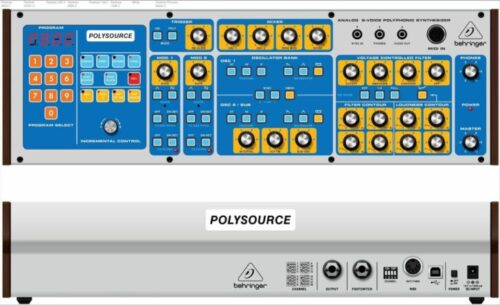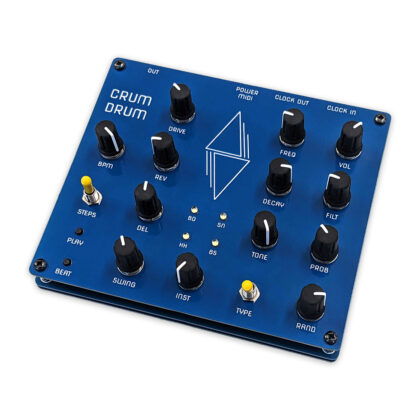
Behringer today teased a new polyphonic synth design, inspired by the Moog Source, the Polysource.
Details are to come from the company, but it appears to be another of their Euro-format synth module that are closely modeled on a vintage synthesizer.
While many of the Behringer’s products are designed to be straightforward knockoffs, the Behringer Polysource is much more interesting. It copies the look, the branding and the synth voice of the original Moog Source, but it also remixes these elements significantly – and in interesting ways.
The front panel of the Behringer Polysource is immediately recognizable as a copy of the Moog Source. But on closer look, the panel has been redesigned significantly, and adds physical controls. Where the original was limited to a single data entry knob, the Polysource interface is positively knobby, by comparison.
Like Behringer’s other Euro-format synth copies, the Polysource offers limited patchability. In this case, the Polysource offers a single Sync In patch point.
What the company shared about the Behringer Polysource:
“Marc, one of our mad product designers, asked me to show his PolySource draft to you, which is inspired by the Moog Source.
He stands right behind me and said he won’t leave the office until I have posted it, as he wants to read your feedback over the weekend.
Marc is actually a pretty cool guy who was deeply involved in the PRO-800. Before I press the send button he said “tell the folks we could make this bad boy also with 8 analog voices, full patch memory and for the same price as the PRO-800.”
Behringer did not announced any timetable for the Polysource, but based on previous previews, it’s likely to be a year or more before it ships.
Would you be interested in a $400 polyphonic take on the Moog Source? Leave a comment and share your thoughts!




